The Central Epidemic Command Center (CECC) yesterday said that cities and counties with a higher risk of COVID-19 infection would receive 5 or 10 percent more vaccine doses in the next distribution round.
On Friday, 663,100 doses of the AstraZeneca COVID-19 vaccine, about half of the 1.24 million doses donated by Japan, were distributed to local governments.
However, as the vast majority of cases confirmed since last month were reported in Taipei and New Taipei City, Taipei Mayor Ko Wen-je (柯文哲) and New Taipei City Mayor Hou You-yi (侯友宜) on Saturday asked why Kaohsiung seemingly received more doses than their two municipalities.
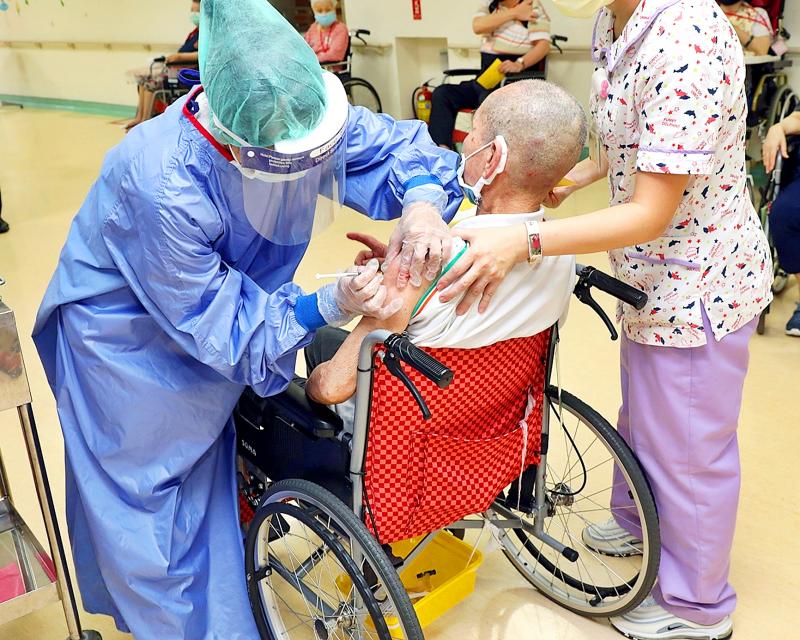
Photo: Wang Shan-yen, Taipei Times
Centers for Disease Control (CDC) Deputy Director-General Chuang Jen-hsiang (莊人祥), who is the CECC’s spokesperson, on Saturday evening said that about 10,100 of the 91,000 doses distributed to Kaohsiung were for the military, so New Taipei City received the most doses at 83,000.
Minister of Health and Welfare Chen Shih-chung (陳時中), who heads the center, yesterday said that the number of doses distributed was calculated based on the same principle for each area.
The doses covered 60 percent of people in the top three priority groups who have not been vaccinated, 60 percent (80 percent for outlying islands) of residential long-term care center workers and residents, 27 percent (90 percent for outlying islands) of senior residents who are 75 and older, and all people on dialysis, he said.
As public health specialists have suggested that infection risk stratification should also be taken into consideration, the center would provide 10 percent more doses to high-risk areas — Taipei and New Taipei City — in the next distribution round, which is expected to be on Tuesday or Wednesday, Chen said.
The center would also provide 5 percent more doses to medium-high risk areas, including Keelung, Taoyuan, Taichung, and Changhua and Miaoli counties, he said.
An additional 2,000 doses would be distributed to Lienchiang County in the next round, as medical resources on outlying islands are scarce and transportation is problematic, he added.
So as not to increase their risk of virus transmission, people aged 75 and older are recommended to get vaccinated at their nearest location, even if they are not living at their household registration location, Chen said.
The next distribution round would take into consideration the vaccination efficiency of cities and counties, he said, adding that vaccines would immediately be distributed to cities and counties that have almost finished administering the vaccines they have.
However, he said that local governments should not race to vaccinate people, as they would still receive vaccine doses based on the allocation principle.Meanwhile, Chuang addressed public concerns about the vaccine candidates of local manufacturers, which might be approved for use in Taiwan later this year.
Some politicians last week asked why the price of the vaccine candidates by local vaccine makers seemed to be much higher than major vaccines from other countries.
Chuang yesterday said that different vaccines are made using different technologies, and the domestically produced ones are protein subunit vaccines.
To test the efficacy of domestically produced vaccine candidates, the Food and Drug Administration (FDA) would examine whether vaccine candidate recipients produced neutralizing antibodies inferior to those of AstraZeneca vaccine recipients, he said.
The FDA and experts would strictly review the data submitted by local vaccine makers to assess the safety and efficacy of their vaccines, he said, adding that it would only issue emergency use authorization if the benefits of administering the vaccine outweigh the risks from COVID-19 infection.
The FDA has held several specialist meetings and referenced regulations in other countries to establish a standard for emergency use authorization, he added.
Local vaccine makers are also planning to conduct phase 3 trials in other countries, hoping to obtain international verification, Chuang said.
In related developments, Ministry of National Defense spokesman Major General Shih Shun-wen (史順文) said that the military yesterday began administering the vaccine to military personnel based on a priority list, without providing any further information.
According to local media reports, the military has prioritized frontline personnel, such as the members of chemical units responsible for disinfection, medical personnel and pilots.
So far, 11 of the approximately 180,000 people in the armed forces have contracted COVID-19, the ministry said.
To prevent the spread of COVID-19, the ministry has postponed reservist call-ups and the live-fire component of this year’s Han Kuang exercises until September.
Additional reporting by CNA
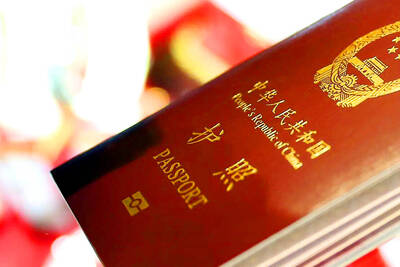
The Ministry of the Interior (MOI) is to tighten rules for candidates running for public office, requiring them to declare that they do not hold a Chinese household registration or passport, and that they possess no other foreign citizenship. The requirement was set out in a draft amendment to the Enforcement Rules of the Public Officials Election and Recall Act (公職人員選舉罷免法 ) released by the ministry on Thursday. Under the proposal, candidates would need to make the declaration when submitting their registration forms, which would be published in the official election bulletin. The move follows the removal of several elected officials who were
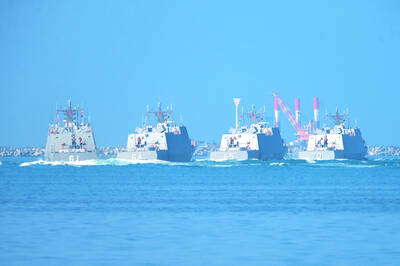
FOUR DESIGNATED AREAS: Notices were issued for live-fire exercises in waters south and northwest of Penghu, northeast of Keelung and west of Kaohsiung, they said The military is planning three major annual exercises across the army, navy and air force this month, with the navy’s “Hai Chiang” (海強, “Sea Strong”) drills running from today through Thursday, the Ministry of National Defense said yesterday. The Hai Chiang exercise, which is to take place in waters surrounding Taiwan, would feature P-3C Orion maritime patrol aircraft and S-70C anti-submarine helicopters, the ministry said, adding that the drills aim to bolster the nation’s offshore defensive capabilities. China has intensified military and psychological pressure against Taiwan, repeatedly sending warplanes and vessels into areas near the nation’s air defense identification zone and across
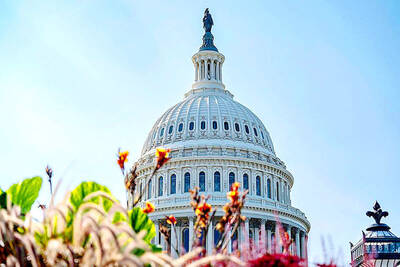
SENATE RECOMMENDATION: The National Defense Authorization Act encourages the US secretary of defense to invite Taiwan’s navy to participate in the exercises in Hawaii The US Senate on Thursday last week passed the National Defense Authorization Act (NDAA) for Fiscal Year 2026, which strongly encourages the US secretary of defense to invite Taiwan’s naval forces to participate in the Rim of the Pacific (RIMPAC) exercise, as well as allocating military aid of US$1 billion for Taiwan. The bill, which authorizes appropriations for the military activities of the US Department of Defense, military construction and other purposes, passed with 77 votes in support and 20 against. While the NDAA authorizes about US$925 billion of defense spending, the Central News Agency yesterday reported that an aide of US
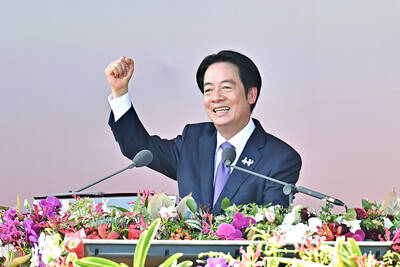
NATIONAL DAY: The ‘Taiwan Dome’ would form the centerpiece of new efforts to bolster air defense and be modeled after Israel’s ‘Iron Dome,’ sources said President William Lai (賴清德) yesterday pledged to strengthen the nation’s air defense capabilities and build a “T-Dome” system to create a safety net against growing military threats from China. “We will accelerate our building of the T-Dome, establish a rigorous air defense system in Taiwan with multi-layered defense, high-level detection and effective interception, and weave a safety net for Taiwan to protect the lives and property of citizens,” he said in his National Day address. In his keynote address marking the Republic of China’s (ROC) 114th anniversary, Lai said the lessons of World War II have taught nations worldwide “to ensure that